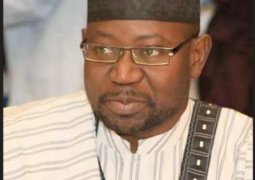According to WHO, there were 214 million new cases of malaria worldwide in 2015, Gambia no exception
Malaria: Causes, Symptoms and Treatments
The World Malaria Day theme provides a common platform for countries to showcase their successes in malaria control and unify diverse initiatives in the changing global context. Malaria-endemic countries have made incredible gains in malaria in the last decade, but sustaining them will take extra efforts until the job is finished and malaria is eliminated worldwide. While efforts to prevent, diagnose and treat malaria have gained important momentum over the past years, an annual shortfall in funding threatens to slow down progress, particularly across Africa where high-burden countries are facing critical funding gaps. Unless the world can find a way to bridge the funding gaps and endemic countries have the resources and technical support they need to implement sound malaria control plans, malaria resurgence will likely take many more lives
What is Malaria?
Malaria is a life-threatening blood disease caused by parasites transmitted to humans through the bite of the Anopheles mosquito. Once an infected mosquito bites a human and transmits the parasites, those parasites multiply in the host’s liver before infecting and destroying red blood cells.
The disease can be controlled and treated if diagnosed early on. Unfortunately, this is not possible in some areas of the world lacking in medical facilities, where malaria outbreaks can occur.
Researchers are working hard on improving the prevention of malarial infection, early diagnosis and treatment, with just one malaria vaccine close to being licensed so far.
Fast facts on malaria
Here are some key points on malaria. More detail and supporting information is in the main article.
- Malaria was first identified in 1880 as a disease caused by parasitic infection
- The name of the disease comes from the Italian word mal’aria, meaning “bad air”
- Malaria is transmitted to humans through bites by infected mosquitoes
- The most common time for these mosquitoes to be active is between dusk and dawn
- Worldwide, there were an estimated 198 million cases of malaria in 2013 and 584,000 deaths
- Malaria occurs mostly in poor, tropical and subtropical areas of the world
- Malaria was eliminated from the US in the early 1950s, but the mosquitoes that carry and transmit the malaria parasite still remain, creating a constant risk of reintroduction
- Reported malaria cases in the US reached a 40-year high of 1,925 in 2011
- A malaria vaccine for humans is close to being approved for use in Europe
- An estimated 3.4 billion people in 106 countries and territories are at risk of malaria - nearly half of the world’s population
- Annual funding for malaria control in 2013 was three times the amount spent in 2005, yet it represented only 53% of global funding needs
- Malaria incidence rates are estimated to have fallen by 30% globally between 2000 and 2013 while estimated mortality rates fell by 47%
Causes of malaria
Malaria is caused by the bites from the female Anopheles mosquito, which then infects the body with the parasite Plasmodium. This is the only mosquito that can cause malaria.
The successful development of the parasite within the mosquito depends on several factors, the most important being humidity and ambient temperatures.
When an infected mosquito bites a human host, the parasite enters the bloodstream and lays dormant within the liver. For the next 5-16 days, the host will show no symptoms but the malaria parasite will begin multiplying asexually.7
The new malaria parasites are then released back into the bloodstream when they infect red blood cells and again begin to multiply. Some malaria parasites, however, remain in the liver and are not released until later, resulting in recurrence.
An unaffected mosquito becomes infected once it feeds on an infected individual, thus beginning the cycle again.
The video below from the Howard Hughes Medical Institute visualizes how a single bite from an infected mosquito can quickly turn into the life-threatening disease.
Symptoms of malaria
According to the Centers for Disease Control and Prevention (CDC), malaria symptoms can be classified in two categories: uncomplicated and severe malaria.
Uncomplicated malaria is diagnosed when symptoms are present, but there are no clinical or laboratory signs to indicate a severe infection or the dysfunction of vital organs. Individuals suffering from this form, can eventually develop severe malaria if the disease is left untreated, or if they have poor or no immunity to the disease.
Symptoms of uncomplicated malaria typically last 6-10 hours and occur in cycles that occur every second day, although some strains of the parasite can cause a longer cycle or mixed symptoms. Symptoms are often flu-like and may be undiagnosed or misdiagnosed in areas where malaria is less common. In areas where malaria is common, many patients recognize the symptoms as malaria and treat themselves without proper medical care.
Uncomplicated malaria typically has the following progression of symptoms through cold, hot and sweating stages:
- Sensation of cold, shivering
- Fever, headaches, and vomiting (seizures sometimes occur in young children)
- Sweats followed by a return to normal temperature, with tiredness.
Severe malaria is defined by clinical or laboratory evidence of vital organ dysfunction. This form has the capacity to be fatal if left untreated. As a general overview, symptoms of severe malaria include:
- Fever and chills
§ Impaired consciousness
- Prostration (adopting a prone or prayer position)
- Multiple convulsions
- Deep breathing and respiratory distress
- Abnormal bleeding and signs of anemia
- Clinical jaundice and evidence of vital organ dysfunction.
Malaria: Diagnosis and Treatments
Tests and diagnosis of malaria
Early diagnosis of malaria is critical for a patient’s recovery. Any individual showing signs of malaria should be tested immediately. The WHO strongly advise parasitological confirmation by microscopy or a rapid diagnostic test (RDT).8
The choice of testing method is, of course, dependent on the medical facilities available. RDT has become popular worldwide due to its capacity to provide a quick diagnosis.
RDTs are increasingly used as health care professionals seek to not only improve testing methodologies, but also to ensure that the opportunity for testing reaches a wider audience. The number of RDTs distributed by national malaria control programs around the world has increased substantially. In 2005, less than 200,000 RDTs were provided, in 2012 this number had risen to 108 million.9
The signs and symptoms of the disease are non-specific. However, malaria is clinically suspected on the basis of fever, or a history of fever. Unfortunately, there is no combination of symptoms that can reliably distinguish the disease from other causes, hence the importance of a parasitological test.
In some malaria-endemic areas, such as sub-Saharan Africa, the disease is so intense that a large proportion of the local population can develop a mild immunity to the disease. As a result, some people can still carry the parasites in their bloodstream, but do not fall ill.
Treatments for malaria
If left untreated, malaria can be fatal. The aim of treatment is to eliminate the Plasmodium parasite from the patient’s bloodstream. Even those who are asymptomatic may be treated for infection so as to reduce the risk of disease transmission in the general populace.
Anti-malaria drugs are more accessible than ever before, but further challenges lie ahead until the disease is eradicated.
Artemisinin-based combination therapy (ACT) is recommended by the WHO to treat uncomplicated malaria. Artemisinin is derived from the plant Artemisia annua, better known as sweet wormwood, and is known for its ability to reduce quickly the number of Plasmodium parasites in the bloodstream.
ACT is artemisinin combined with a partner drug. The role of artemisinin is to reduce the number of parasites within the first three days while the partner drugs eliminate the rest.
Expanding the access to ACTs has been integral to the global fight against the disease. In 2013, 392 million ACT treatment courses were obtained by endemic countries, a substantial rise from 11 million in 2005.
However, there is growing concern about the increase of cases of malaria resistant to the effects of ACTs. As of February 2015, artemisinin resistance has been confirmed in five countries: Cambodia, Laos, Myanmar, Thailand and Vietnam. For these cases, individuals were still successfully treated, but the ACT must contain an effective partner drug.
The WHO has warned that as no alternatives to artemisinin are likely to become available for several years, and because ACTs are the main treatment for P. falciparum malaria, it is of paramount importance that steps be taken to prevent the spread of ACT-resistant strains. National malaria control programs are now being asked to regularly monitor the efficacy of antimalarial medicines in use to ensure that treatments remain efficacious.
Medical News Today recently reported a new study that revealed a breakthrough for scientists overcoming.
Furthermore, there have been cases of fake anti-malaria drugs being distributed, the majority of these were found in Africa. In response, The US Food and Drug Administration announced a handheld device to identify counterfeit medicines.
Vaccines for malaria
Research is ongoing to develop safe and effective vaccines for malaria, with one vaccine close to being licensed for use in Europe.
The development of an effective malaria vaccine poses major challenges as a comprehensive vaccine would need to be effective against a number of strains of malaria parasites. As such, the majority of vaccines in development are focused on the most serious and deadly parasite.
For further information WHO Website, Ministry of Health, MRC, Email to azadehhassan@yahoo.co.uk, Text only to Dr Azadeh on 002207774469/3774469 between 3-6 pm
Author DR AZADEH Senior Lecturer at the university of the Gambia, Senior Consultant in Obstetrics & Gynaecology, Clinical Director Medicare Health Sevices.
Read Other Articles In Article (Archive)



